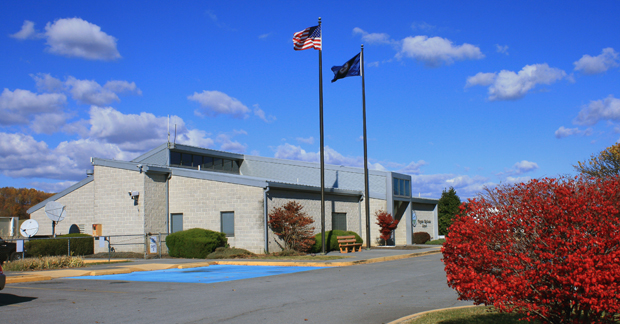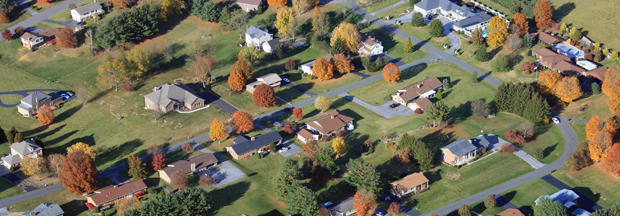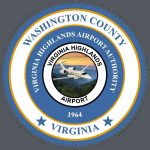neighbors information
neighbors of vha – find out important information here
Economic Importance of Airports
The Commonwealth of Virginia’s diverse system of airports, including Virginia Highlands Airport (VJI), plays a vital role in the state and regional economies by creating jobs and contributing to overall community development. In addition, airports in Virginia serve as a gateway to the nation’s air transportation system and the world’s economy.
Virginia’s system of 66 public-use airports provides the Commonwealth with a safe and efficient means of transportation as well as stimulates economic growth and development. By providing aviation-related services, the system supports more than a quarter million jobs and generates billions of dollars in economic activity while meeting the air travel needs of Virginia residents, businesses and visitors.
Virginia’s airports contribute $28.8 billion in economic activity to the Virginia economy, which represents 4.4% of the state’s total economic output.
Approximately 259,000 jobs are created and sustained by Virginia airports. This represents 5.5% of total jobs in Virginia.
$11.1 billion in payroll is realized as a result of jobs created by Virginia airports.
On a daily basis, over 6,000 aircraft take-off from and land at Virginia airports.
Each day, approximately 23,000 visitors arrive in the state by commercial airline or general aviation aircraft.
Each job at Virginia’s airports supports an additional seven jobs in the state.
Every $1 spent at a Virginia airport contributes an additional $3.48 in economic activity for Virginia.
Virginia’s general aviation airports, including Virginia Highlands Airport, produce $722 of economic activity for every aircraft take-off and landing.
A 2011 Economic Impact Study reported Virginia Highlands Airport supported 70 jobs with annual payroll of over $2.2M Virginia Highlands Airport is part of The National Plan of Integrated Airport Systems (NPIAS) which is submitted to Congress in accordance with Section 47103 of Title 49 of the United States Code. The plan identifies 3,380 public-use airports that are significant to national air transportation and, therefore, eligible to receive grants under the Federal Aviation Administration (FAA) Airport Improvement Program (AIP). AIP programs in the Commonwealth of Virginia are funded 90% with FAA funds, 8% from funds from the Virginia Department of Aviation (DOAV) and 2% from local funds.
The aviation system is a self-funded system. Funds for airport and airway development DO NOT come from an individual’s income tax or real estate tax or sales tax. The taxes to fund the system come from users of the airports and airways.
FAA funds are provided by the Airport and Airway Trust Fund, created by Congress in 1970 through the Airport and Airway Development and Revenue Act. Revenues are derived from aviation-related excise taxes on passengers, cargo and fuel. Users of the aviation system pay for the system.
The Airport Capital Program is the Commonwealth of Virginia’s funding program used to provide funding assistance to airport sponsors for capital development projects at Virginia’s public-use airports. The funds come from excise tax on aviation fuel, sales tax on aircraft and license fees. The users of the aviation system pay for the system.
Locally, the funds provided by Washington County for capital improvement projects at Virginia Highlands Airport come from personal property taxes assessed on the aircraft based at the airport. Usually this is over $300T each year. The funds requested by the Airport Authority to relocate Route 611 and to extend the runway were paid for with taxes collected on aircraft based at Virginia Highlands Airport and from funds provided by the Virginia Department of Transportation (VDOT). Washington County does not provide operational funding for the airport. Operational expenses are funded through fuel sales and hangar rents collected by the airport. The users of the aviation system pay for the system.
A number of years ago the leaders in Washington County and the Airport Authority became aware of the need to extend the runway at Virginia Highlands Airport. Washington County lost a large and lucrative industry because of the short runway and business aircraft were taking their business to other airports with longer runways. This situation continues today. The Airport Authority has been successful in attracting business aircraft to locate here by maintaining first-class facilities and providing navigational aids and amenities to the aviation industry. Of the 57 general aviation airports in Virginia only one other airport has more based business jet aircraft. The business aircraft based at Virginia Highlands contribute a significant amount to the county tax base while providing the operators with safe and rapid access to the national air transportation system.
Virginia Highlands Airport has the shortest runway length of any public-use airport in Virginia with 4 or more based jet aircraft. Also, Virginia Highlands Airport has the highest field elevation of any airport in Virginia with 4 or more based jet aircraft. Virginia Highlands Airport has completed a $1M obstruction removal project to enhance the safety of departing and arriving aircraft. Based on the runway length and field-elevation the airport needs to continue with its safety enhancement program to lengthen the runway to serve existing and future business aircraft demand. 5,500 feet is the requirement for 75% of the business aircraft fleet assuming a 60% useful load.
To date the amount spent for the runway extension project totals about $20 million. This amount includes environmental assessment expenses and land acquisition. The environmental assessment expenses were paid for with FAA and DOAV entitlement funds and 2% local funds generated by the airport.
Virginia Highlands Airport is not only home for business aircraft but serves as home for about 67 other private and government aircraft. VJI is home for one of only two Virginia State Police aviation units that provides 24 hour law enforcement service and emergency medical helicopter transportation service. Also the Virginia Department of Forestry has a base of operations during fire season at VJI. VJI is the point of arrival and departure for visitors headed for Bristol races, the Barter Theater, the Creeper Trail, the Appalachian Trail, or one of our local world-class golf courses or one of the many other great attractions in the local area.
The FAA and Virginia Department of Aviation (DOAV) have long realized the critical role a modern airport plays in the economic development of a community. Entitlement funds and discretionary funds provided by FAA and DOAV are highly sought after by communities all across Virginia. Fortunately the Virginia Highlands Airport Authority and Washington County have been diligent in obtaining and using these funds in years past to provide the County with a first-class general aviation airport. It would be a disgrace to see future funds re-directed to another community when they could best be used here to continue to make Washington County a leader in aviation in the State.
Our History
Around 1958 Appalachian Power Company began construction of its Clinch River Power Plant at Carbo, Virginia in Russell County, Virginia which is located some 30 miles to the north of Abingdon, Virginia. An employee of the company building the plant wanted to live in the Abingdon, VA area and fly to the construction site at Carbo. At the time there were no nearby landing strips in the area so some farm land was leased from what was know as the St. John farm, located about 2 miles west of Abingdon next to US Highway #11. A small dirt strip was graded out of the pasture field and that was the beginning of the airport. Some other local residents used the small strip throughout the late 1950’s and into the mid-1960’s.

Sometime around 1964 a group of local pilots got together and leased the land for the use as a runway for their recreational flying. At the same time, the interstate highway system was being developed and was opening up not only all of Virginia but the nation as a whole. As a result, industry was beginning to spread throughout Virginia and especially Southwest Virginia and Washington County. It became apparent that in order for continued economic and industrial growth for Washington County and the region that an airport to accommodate industry needed to be constructed. The Town of Abingdon and Washington County joined together and with the help of the state and federal government, acquired additional property and constructed a paved runway.
The runway was 2,800 feet long and 40 feet wide. It soon became apparent because of the rapid development of aviation in the country and of general aviation airplanes, which serve the industries in particular, that the facilities were inadequate to cover the air transportation needs of the area. Because of the runway limitations the airport continued to be primarily a recreational airport.
In 1983 a meeting was held between the Airport Commission, local business people, Congressional Representatives and representatives from the Virginia Department of Aviation and the FAA. Those present expressed concern about the condition of the airport and the airports importance to economic development for the county and Southwest Virginia. As a result of that meeting, state and federal aviation officials realized that the citizens of Washington County and Abingdon were serious in their desire to properly develop the airport.
The next step of development was to obtain the help of the Jacobs Creek Job Corp, which provided the first earth moving necessary for the construction of a new runway. The runway was increased to a more useable length of 3380 feet, but was still only 40 feet wide. The next phase was to then construct an entirely new runway and to convert the old runway into a taxiway. In 1986 a new runway was opened immediately north of the old runway with a width of 75 feet and meeting all of the appropriate safety requirements. However, this new runway was still only 3380 feet long, which left the airport unusable to many corporate and business aircraft.
During the next three years security fences were installed. Helipad construction and a rotating beacon were installed. Also, the State of Virginia installed a localized approach, which provided for safer landings in bad weather. Also, during this time, plans were being formulated for the construction of a new terminal building.

In 1963 the only terminal building the airport had was an old HUD reject house trailer. A few years later a “lean-to” building was constructed adjacent to the main corporate hanger but this proved to soon be inadequate to meet the growing needs of general aviation.
In 1990 the Airport Commission, Washington County and the Virginia Aviation Board authorized construction of the present terminal building. The building was completed in 1991 and was dedicated along with a new runway extension, which took the runway to its present length of 4470 feet.
Virginia Highlands Airport has continued to grow and expand from these early years. There are presently 39 T-Hangers, 5 corporate hangers, 2 clearspan hangers at the airport. There are 69 aircraft based at the airport representing everything from ultralights to business jets. There is a Virginia State Police Medflight unit based at the airport that serves all of southwest Virginia providing emergency medical flights and aerial law enforcement.
In 2007 the Washington County Board of Supervisors officially changed the name of the governing body of the airport to “Virginia Highlands Airport Authority”. The Board of Directors is appointed by the Washington County Board of Supervisors, one representative from each magisterial district.
Special thanks to Mr. Emmitt F. Yeary who provided information about the history of Virginia Highlands. Emmitt served on the Airport Commission for eleven years and also served on the Virginia Board of Aviation.
NOTE: If you have an interesting story or bit of history about VJI that you would like to share please contact us.
Airport FAQ
Who owns the airport?
You do! VJI is a county airport operated by the Virginia Highlands Airport Authority and governed by Washington County, Virginia. The capital funding of the airport is provided by federal (90%), state (8%), and local (2%) taxes. The airport is currently valued at over $40M. Some of the maintenance is supported by the state (about 50%). The annual operations budget is about $1.5M supported mostly from revenues with and annual assist from Washington County, Virginia.
Who runs the airport?
The operations and maintenance of VJI are the responsibility of the administrative staff and the employees. The governing policies are set by the Board of Directors consisting of 7 members, one from each voting district of the county, appointed by the County Supervisors from each district. Each Director is appointed for a 4-year term and Directors may not serve more than two consecutive terms. From their membership the Directors elect a Chairman, Vice-Chairman, Secretary, Treasurer.
What benefit is the airport to the public?
The US Forest Service has an aerial fire-fighting unit based at the airport during fire seasons to protect our forestland.
The VA State Police have a reconnaissance airplane and 2 Medevac helicopters with a nurse and paramedics on site. The aircraft are used in crime prevention, search and rescue and emergency medical transportation. The aircraft are used all over Southwest Virginia and can respond within minutes when needed.
Just-in-time parts and inventories and critical medicines and vaccines are shipped air freight. Financial institutions use the airport daily to transfer bank drafts and other important papers. Charter passenger and air taxi services and flight instruction are available for the public. Government personnel and business executives fly in and out of VJI almost daily. Several local corporations benefit from the advantage of having their aircraft based at VJI.
Who plans the airport?
The Federal Aviation Administration (FAA), in conjunction with the Virginia Highlands Airport Authority, develops the Airport Layout Plan (ALP) based on past, current and estimated future usage. The airport administrative staff writes, in conjunction with an airport engineering firm employed by the Airport Authority, the grant requests for separate Airport Improvement Program (AIP’s) projects that develop the plan.
What are minimum standards and why does the airport have them?
The U.S. Department of Transportation, Federal Aviation Administration, Advisory Circular (AC) Number 150/5190-7, dated August 28, 2006; entitled Minimum Standards for Commercial Aeronautical Activities provides the basic information pertaining to the FAA’s recommendations on minimum standards and related policies.
This document is available for download at www.faa.gov/airports.
Where can I get a copy of airport Minimum Standards and Rules and Regulations?
Minimum Standards and Rules and Regulations for VJI are listed on this web site, or you may request a copy by calling 276-628-2909. Copies are available at the administrative office at the airport.
